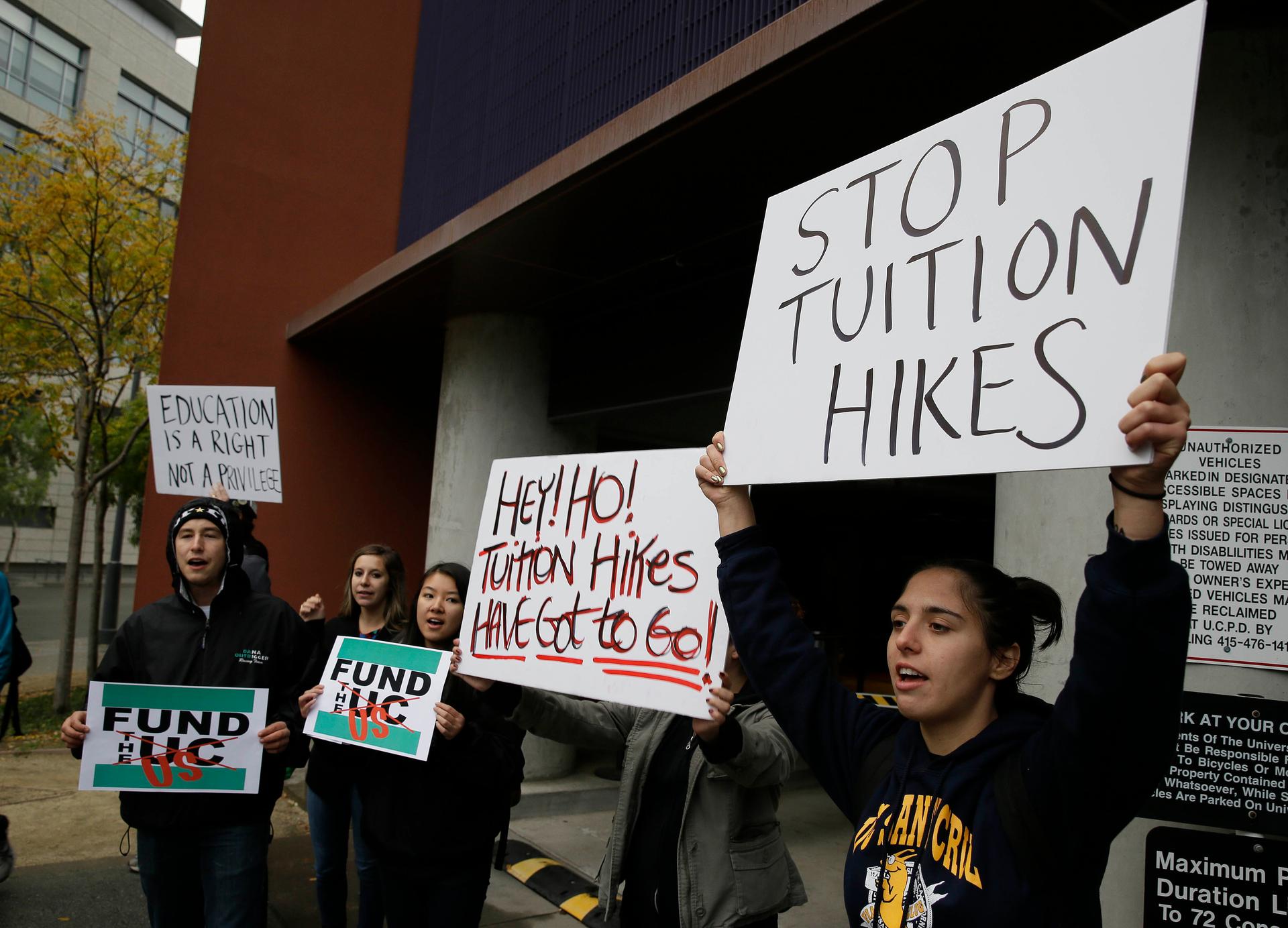High fees paid by international students help US universities balance their books
More than 1 million international students study in the US, making up about 6% of all university enrollment.
They contribute $40 billion to the economy annually, and most of these students pay full fare. US universities and colleges have come to depend on tuition fees to keep the lights on, though only some students are wealthy.
Karin Fischer, who covers international education for the Chronicle of Higher Education, joined The World’s host Carolyn Beeler to explain.
Carolyn Beeler: I’d like to start by better understanding the role that international students’ tuition fees play in US higher education. How important are they, and what do they go to?
Karin Fischer: It’s not coincidental that you saw a real increase in the number of international students coming in, and that started about 10 or 12 years ago during the economic downturn. At that time, when particularly public colleges and state budgets were being cut, you could actually see how declines in state dollars going to colleges were being made up for with foreign enrollments. Those tuition dollars are pretty important to keeping the lights on.
How much do international students pay compared to folks from the US at both private and public colleges and universities?
Typically, international students and out-of-state students pay more than students who go to college in their own home states, sometimes two or three times as much. International students may also pay special fees for things like visa processing and English language exams. And so, quite often, I mean, there’s this perception that international students are coming here and that we are paying as Americans, and we’re subsidizing them. But the fact is, it’s really the reverse — about 80% of international students pay their own way, whether from their own families or by borrowing money.
Now, there has been criticism in some places like California, where you’re based, that international students are taking places that should be for US students. Is that a fair criticism?
Well, there was in California and on the West Coast in general … that is perhaps a fair criticism. Then, in the rest of the country, there was an actual conscious decision made by public universities in California to specifically market themselves and try to recruit more students to make up for budget shortfalls from the state. In fact, in the last couple of years, you’ve seen the University of California campuses come to an agreement with state lawmakers to cap the number of international and out-of-state students that they enroll in exchange for getting more money from the state. And so there’s this, this very concrete kind of trade-off.

And how are these international students paying for college? What is their financial profile?
About 60% of international students are paying for an American education themselves. And when you look at undergraduate students, it’s even higher. More than 80% of them, in fact, are saying that either their personal or family money, or money that they and their families are borrowing, is what they use as the primary source of funding. I mean, you look at some of these families; some of them are quite wealthy, and some of them are newly middle class. One of the big factors in the real growth of international students has been the boom in the Chinese middle class, for example. But also, you’re seeing families who are making choices for years and years.
We are going to meet some students who are struggling financially later in the program. To set that up, I wanted to ask you: How do students afford both these higher tuition fees and the super high cost of living in expensive, desirable big cities here in the US?
It can be very tricky for students to afford the costs, even though they are supposed to be able to demonstrate upfront that they can pay the costs of their tuition. The challenge for international students is that they are forbidden from working off-campus jobs. At least anecdotally. I have been hearing from more colleges that say they have seen a greater international student presence at their campus food pantries; they are seeing international students coming to them for emergency loans and assistance to get themselves through. Again, it’s hard to calculate this, but I certainly hear of international students who are working illegally and in off-campus jobs.
So, you know, if some students are struggling to pay for education here in the US, does the US risk losing out on talent to other countries?
So, it’s always actually been losing out to students who are more price-conscious to places like Canada or Australia, to other English-speaking countries that are major destination countries that charge far less, or even places like Germany where they don’t actually charge at all. But there are other factors that can have influence and do influence students’ willingness to go and study everything from whether can they stay and get jobs afterward to how safe they perceive the countries to be. So, I think the answer is yes, and cost matters, but so do all these other things.
This interview has been lightly edited and condensed for clarity.
Sign up for our daily newsletter
